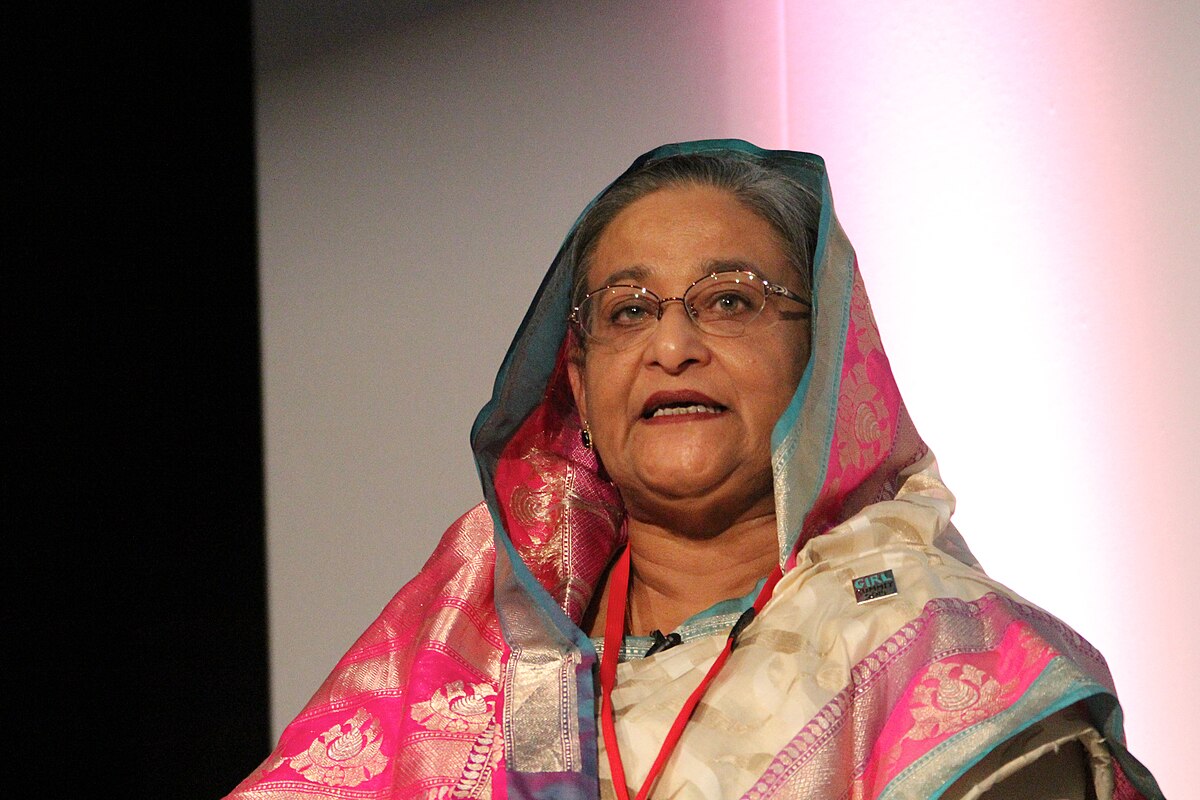The Unexpected Departure of Sheik Hasina
Sheik Hasina, a formidable figure in Bangladesh’s political landscape, abruptly resigned as the country’s Prime Minister and fled to India following weeks of intense protests. The demonstrations, which started as a movement against government job quotas, escalated into widespread calls for her resignation. Hasina’s sudden departure has left the nation in a state of uncertainty, with significant political and social implications.
Sheik Hasina Resigns and Flies to India
The Sudden Exit

On a fateful Monday, 76-year-old Sheik Hasina left Dhaka aboard a military aircraft, landing at an airfield near Delhi in the evening. This sudden move came after a meeting with Bangladesh’s security forces, where it was reportedly decided that stepping down was her only viable option amidst the escalating unrest. Indian government officials confirmed her arrival, marking the beginning of a new chapter in Bangladesh’s political saga.
The Indian Foreign Ministry noted that Hasina requested permission to enter India on short notice while Bangladeshi authorities simultaneously sought flight clearance. This coordinated effort underscores the urgency and gravity of the situation that prompted her swift exit.
The Protests That Led to Hasina’s Resignation
From Job Quotas to Nationwide Unrest

The initial spark for the protests was the reinstatement of a quota system for government jobs, which favored relatives of veterans from Bangladesh’s war of independence. This move, which reversed a 2018 decision to scrap the quotas, angered students who felt it unfairly limited their job prospects. The demonstrations started on university campuses in June, gaining momentum rapidly.
The Supreme Court’s subsequent suspension of the High Court’s order and dismissal of the lower court ruling, which had directed that 93% of government jobs should be open to merit-based candidates, failed to quell the unrest. Instead, the protests grew, with students demanding a public apology from Hasina, the restoration of internet connections, the reopening of campuses, and the release of arrested protesters.
The Turning Point
By the weekend, the protests had morphed into a broader campaign seeking Hasina’s resignation. Demonstrators, galvanized by the violence and government response, called for nationwide non-cooperation, with a single, clear demand: Hasina must step down. The protests, which initially focused on job quotas, had evolved into a powerful movement against perceived government oppression and mismanagement.
The Role of Economic Factors
Stagnant Economy and High Unemployment
The protests were not solely about job quotas. Underlying economic issues also fueled the unrest. Bangladesh, once celebrated for its rapid economic growth driven by the booming garments sector, has seen its economy stagnate. Inflation rates hover around 10% per annum, and dollar reserves are shrinking, creating a bleak economic outlook.
Youth unemployment remains a critical issue, with nearly 32 million young people out of work or education in a population of 170 million. The lack of job opportunities in the private sector made public sector jobs highly attractive, exacerbating frustrations over the job quota system. This economic context provided fertile ground for the protests to grow and intensify.
Also read: https://newsreporto.com/turbulent-times-whats-happening-in-bangladesh/
Political Dynamics and Reactions
The Response from Hasina and Her Government
Initially, Hasina and her government dismissed the protests, blaming the violence on opposition parties such as Jamaat-e-Islami and the Bangladesh Nationalist Party (BNP). She insisted that the real perpetrators were not students but terrorists intent on destabilizing the nation. This narrative failed to convince the protesters, who continued to demand justice for those killed during the demonstrations.
The government’s heavy-handed response, including excessive use of force against protesters, drew widespread criticism from rights groups and Hasina’s political opponents. These actions only served to fuel the anger and resolve of the demonstrators, ultimately leading to Hasina’s resignation.
The Political Fallout
Following Hasina’s departure, Bangladesh’s President Mohammed Shahabuddin dissolved parliament and paved the way for the formation of an interim government. He also released BNP chairperson and former Prime Minister Begum Khaleda Zia from house arrest, a move likely aimed at easing tensions and facilitating a smoother transition.
Student leaders who spearheaded the protests have called for Nobel Peace laureate Muhammad Yunus to be appointed as the chief adviser of the interim government. Yunus, a respected figure both domestically and internationally, could play a crucial role in navigating the country through this turbulent period.
The Future of Bangladesh’s Political Landscape
Interim Government and Upcoming Elections

The dissolution of parliament marks the beginning of a new political phase for Bangladesh. The formation of an interim government is a crucial step toward stabilizing the country and preparing for upcoming elections. The choice of Muhammad Yunus as a potential interim leader reflects a desire for a credible and respected figure to guide the nation through this transition.
The interim government will face significant challenges, including addressing the demands of the protesters, restoring order, and ensuring free and fair elections. The political climate remains tense, and the actions taken in the coming months will be critical in shaping Bangladesh’s future.
The Role of Opposition Parties
With Hasina’s departure, the BNP and other opposition parties are likely to play a more prominent role in the country’s political discourse. The release of Khaleda Zia from house arrest could reinvigorate the BNP, which boycotted the January election, accusing Hasina’s Awami League of conducting sham elections. The opposition will need to capitalize on the current momentum to push for democratic reforms and greater political transparency.
The International Perspective
India’s Involvement and Regional Implications
India’s role in providing refuge to Sheik Hasina highlights the close and complex relationship between the two countries. While India’s assistance in facilitating Hasina’s exit was a humanitarian gesture, it also underscores the strategic considerations at play. Bangladesh’s stability is crucial for regional security, and India has a vested interest in ensuring a peaceful transition of power.
The international community will closely monitor developments in Bangladesh, with potential implications for regional stability and diplomatic relations. The response from neighboring countries and global powers will be essential in supporting Bangladesh’s journey toward political stability and economic recovery.
Sheik Hasina’s resignation marks the end of an era in Bangladesh’s political history. The protests that led to her departure were fueled by economic frustrations, demands for justice, and a broader call for democratic reforms. As Bangladesh navigates this period of transition, the formation of an interim government and the role of opposition parties will be critical in shaping the country’s future. The international community, particularly India, will also play a crucial role in supporting Bangladesh during this pivotal time. The road ahead is fraught with challenges, but it also offers an opportunity for renewed democratic engagement and political reform in Bangladesh.


Real Estate Hi there to all, for the reason that I am genuinely keen of reading this website’s post to be updated on a regular basis. It carries pleasant stuff.
Thank you so much